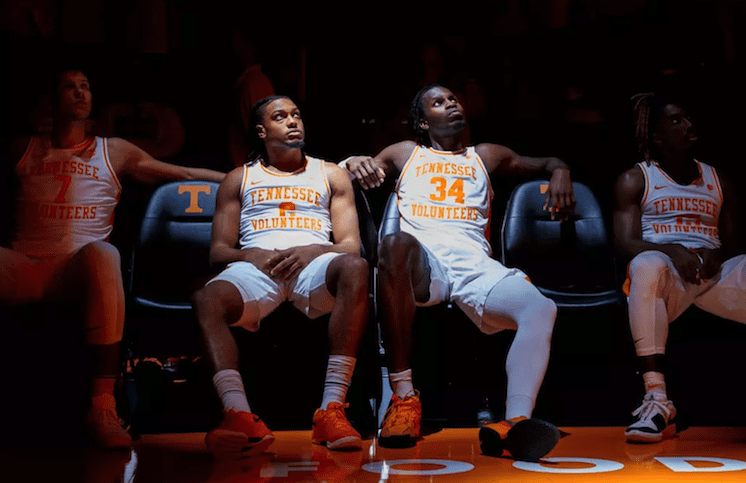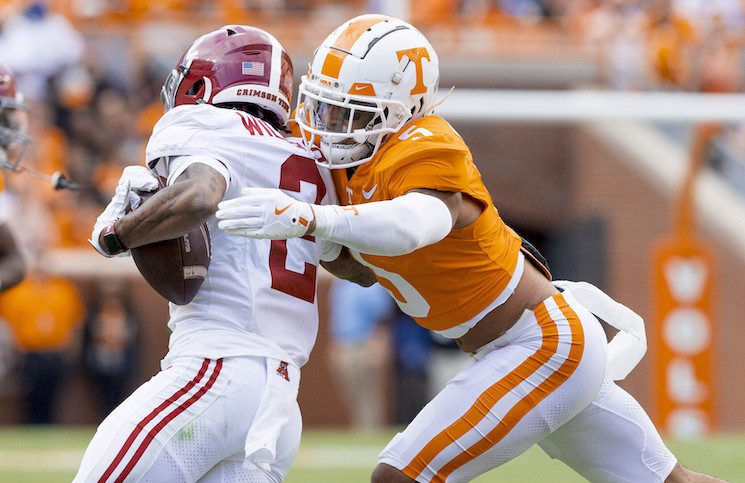Defense

Tennessee allowed Auburn to gain 448 yards of offense, but they produced three turnovers, one of which resulted in a game-deciding touchdown.
The defense’s success of the “bend but don’t break” approach on defense was successful. While Auburn quarterback Jarrett Stidham threw for 322 yards, the Vols’ defensive line was also able to produce just enough of a pass-rush on him to fluster him. The result was two interceptions, a forced fumble, and two sacks.
Here’s what Tennessee’s pass rush generated against Stidham and the Tigers.
Everything started up front for Tennessee on defense. Led by Kyle Phillips and Alexis Johnson, Tennessee’s front seven produced 17 pressures compared to 26 plays in which it didn’t produce a pressure. Johnson and Phillips consistently fought off blocks to fill gaps in the running game and flushed Stidham out of the pocket. The seniors combined for 15 tackles, a sack, a tackle for a loss, eight pressures, and a forced fumble. The 26 plays in which Stidham wasn’t pressured is alarming, but several plays were designed for Stidham to get the ball out immediately, not allowing the pass-rush any chance of generating a pressure.
On the edge, it was unfortunate to see Jonathan Kongbo go down with a torn ACL. Kongbo was in the midst of playing his best game to date, recording a crucial interception that flipped the momentum and setting the edge on some of Auburn’s runs. Deandre Johnson stepped up in Kongbo’s place and shined. Johnson recorded a sack on a key fourth down play late in the fourth quarter and pressured Stidham four times.
As a whole, Tennessee struggled to tackle at times. That inability reared its ugly head when speedy freshman Anthony Schwartz caught a curl route and it took it 75-yards to the house due to poor tackling and angles from Bryce Thompson, Theo Jackson, and Baylen Buchanan. As a defense, the Vols missed 12 tackles.
Thompson, a true freshman, would do a great job of bouncing back, though. Thanks to a pressure from Johnson, Stidham was unable to put enough behind the football on a pass intended to Schwartz along the sideline. Attached to the hip of Schwartz, Thompson jumped the route and picked it off.
The stat-sheet doesn’t look good for Tennessee’s secondary, as Stidham threw for over 300 yards. The group produced 22 good coverages compared to 23 poor coverages, but they were timely. When it mattered most, the back end of the defense made a play.
The most notable play of the secondary came in the red zone. Stidham had an open receiver on 3rd-and-goal, but he missed him. He released the ball late, and Thompson was able to step in front and bat the ball down. Instead of it being a 14-3 ball game, it was now a 10-3 ball game. Former walk-on Paul Bain played a huge role in that particular defensive stop, stopping Auburn on first-and-goal as well as on second-and-goal.
While Stidham found success through the air, Auburn’s rushing attack wasn’t what we’ve all come to know. Whether it be Kerryon Johnson, Tre Mason or Cameron Artis-Payne, Auburn has always had a back that wears down opposing defenses. The Vols didn’t allow that to happen on Saturday. Tennessee’s defense held the Tigers to 126 rushing yards, and feature back Boobie Whitlow was held to just 42 yards on 12 carries. In the second half, the Vols were particularly effective against Auburn’s run game, allowing only 20 rushing yards to the entire team in the last half of play.
Game-by-game, we’re starting to see small improvements at all levels of the defense. The front seven is starting to bust up runs and produce pressure, while the back end is slowly starting to figure out what Pruitt wants to do. The improvements each game bode well for this team to potentially make a bowl game by season’s end.




